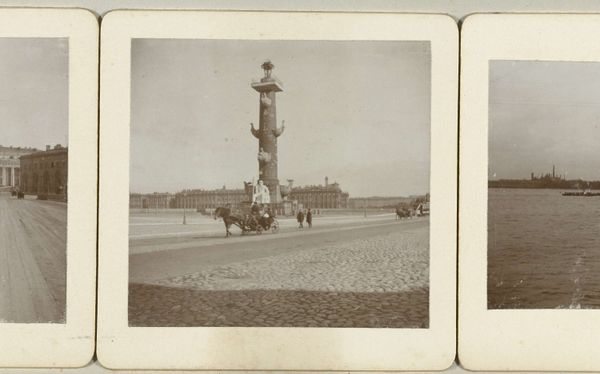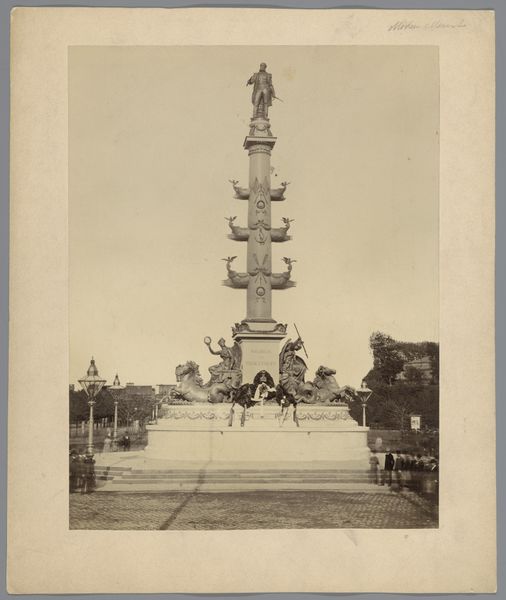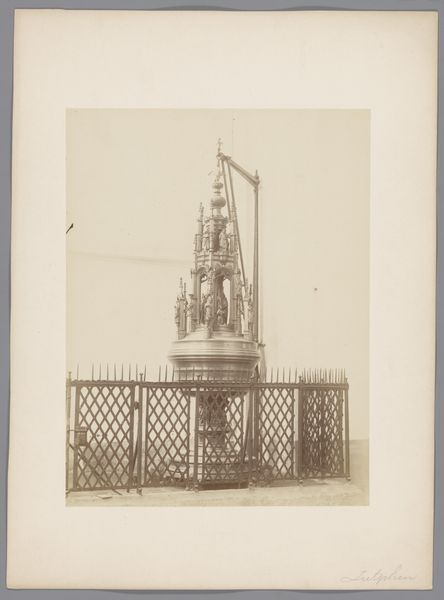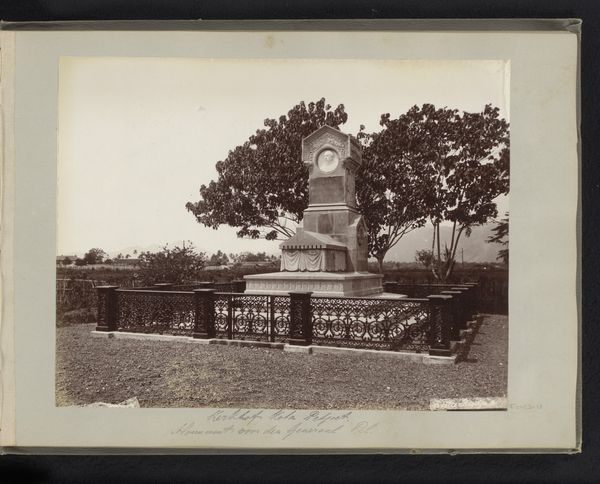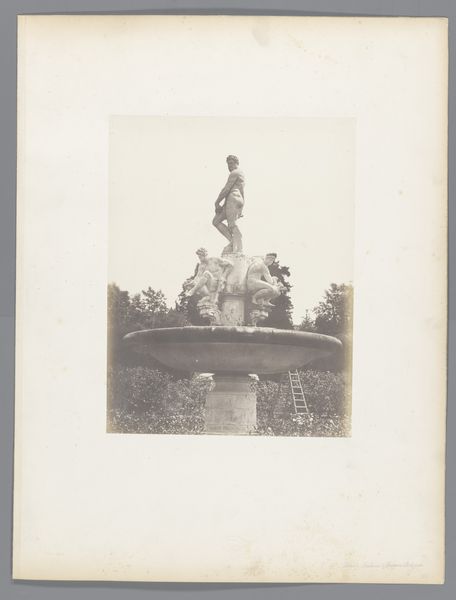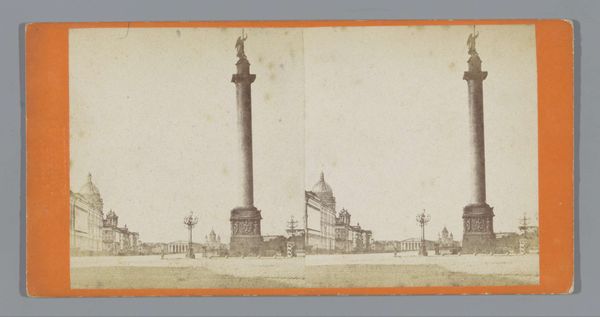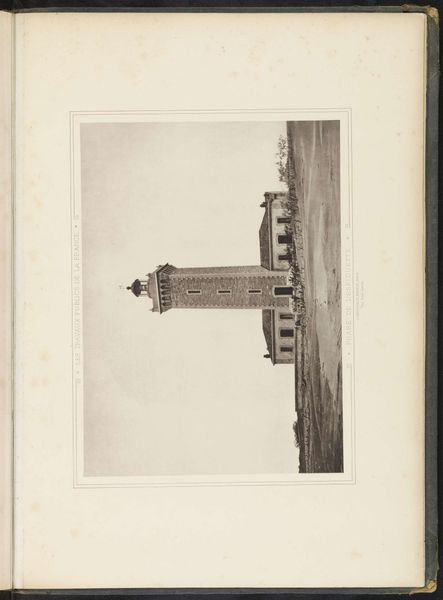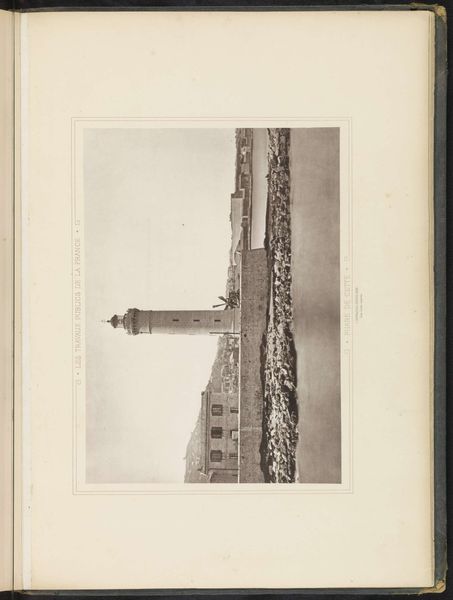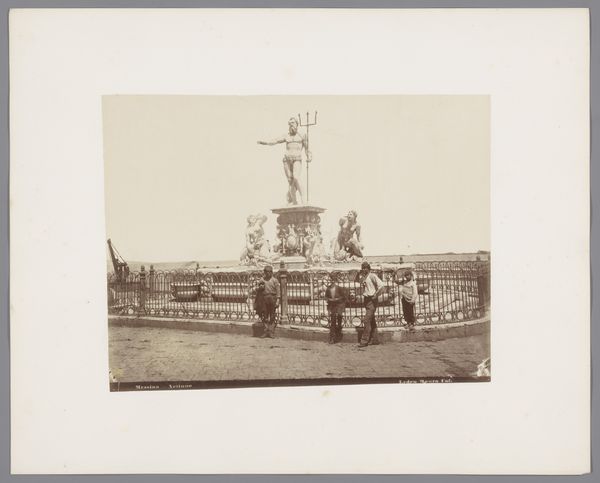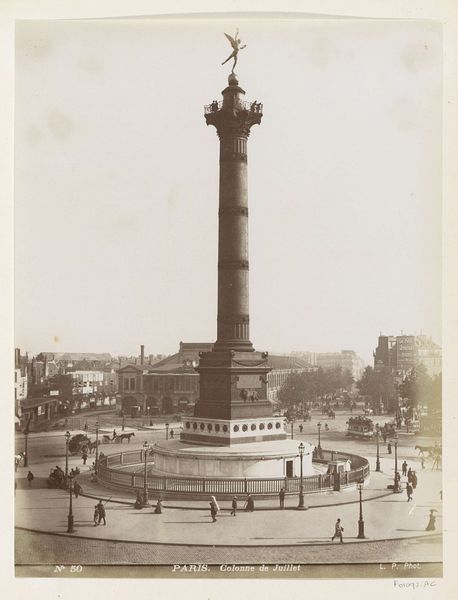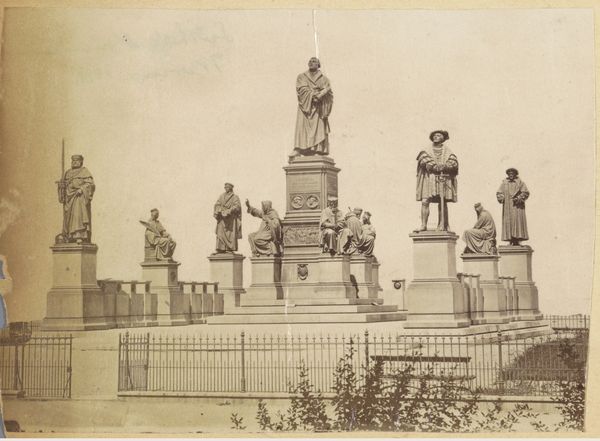
Zuil aan het einde van een brug over de Neva in Sint-Petersburg 1898
0:00
0:00
photography, gelatin-silver-print
#
water colours
#
landscape
#
photography
#
gelatin-silver-print
#
russian-avant-garde
#
cityscape
#
realism
Dimensions: height 100 mm, width 100 mm, height 259 mm, width 365 mm
Copyright: Rijks Museum: Open Domain
Curator: This photograph, taken in 1898 by Henry Pauw van Wieldrecht, captures a view of the Rostral Column standing at the end of a bridge over the Neva River in St. Petersburg. It’s a gelatin silver print currently held at the Rijksmuseum. Editor: The somber, almost monochromatic palette lends this image a melancholy air. The stark column rising out of the vast cobblestone square… it feels so solitary. You can almost feel the damp chill in the air. Curator: Absolutely. It’s a compelling example of how photography was used to document urban spaces and monumental architecture at the turn of the century. Note the precision in capturing the architectural details, which reflects an interest in portraying St. Petersburg as a modern, European capital. Editor: But it’s more than just a record. Look at the quality of light and shadow. The gelatin silver process allows for incredibly fine detail – you can almost feel the texture of the stone and the worn cobblestones beneath your feet. The craftsmanship involved in producing this image, in selecting the angle and mastering the tonal range... it transforms the industrial into something enduringly beautiful. Curator: The positioning of the single figure walking across the square adds another layer of interpretation. It serves to emphasize the sheer scale of the monument while simultaneously reflecting the societal emphasis of the public role of art, highlighting St. Peterburg as a center of culture. Editor: Agreed. And notice how the subdued palette encourages us to really look at the composition and craftsmanship: how the column dominates the image, how its mass shapes our perception of the surrounding landscape, even of the figure traversing it. Curator: A lasting document, indeed. A reflection of imperial ambition captured through the lens. Editor: Yes, it’s a study in the contrasts and interactions between industry, material culture, and human experience.
Comments
No comments
Be the first to comment and join the conversation on the ultimate creative platform.
